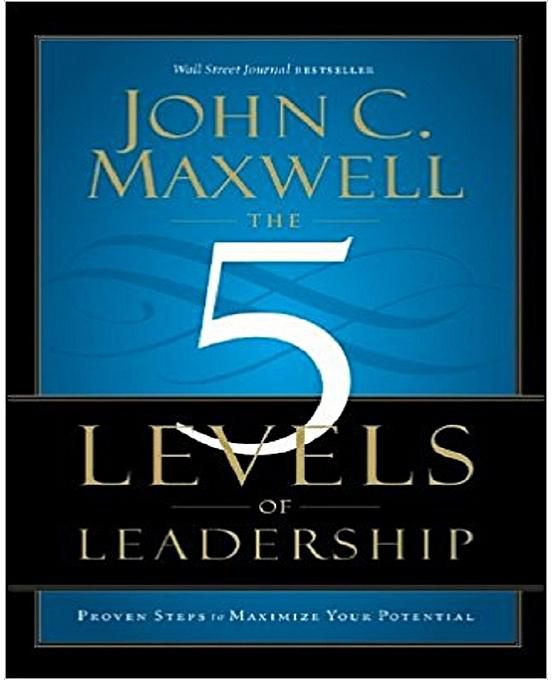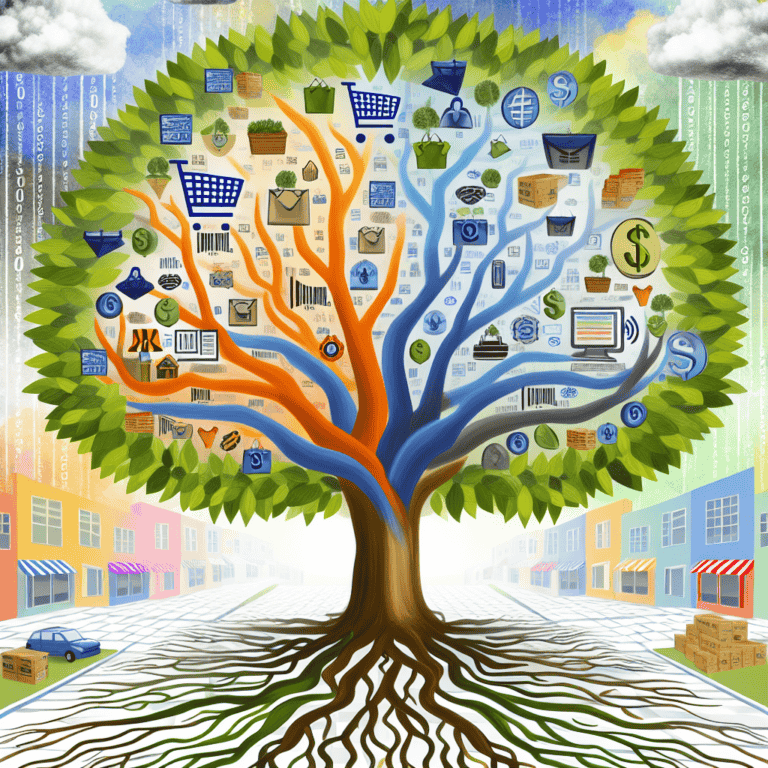The 5 Levels of Leadership by John Maxwell | Summary
In whatever role you take on in life, “you are a leader.” But it is difficult to figure out how to take your leadership to the next level. Thus, leadership expert John Maxwell established the 5 Levels of Leadership paradigm in his book, Developing the Leader Within You.
The book in this summary, The 5 Levels of Leadership: Proven Steps to Maximize Your Potential, expands on the concept of the five levels from the John Maxwell leadership notes and offers the following benefits:
- Provides a clear understanding of Leadership so anyone can learn it.
- Defines Leading as a Verb, not a Noun as “Leadership is a process, not a position.”
- Breaks down Leading into action logic steps as it can be confusing and overwhelming.
- Gives a clear strategy for Leadership Development and building leadership skills in addition to the focus on career and entrepreneurial growth.
- Aligns your Leadership Practices, Principles, and Values:
- Practice – “an action that may work in one situation but not necessarily in another”
- Principle – “an external truth that is as reliable as a physical law”
- Values – an embrace and internalization of a principle and internalizing
Buy The 5 Levels of Leadership on Amazon

The 5 Levels of Leadership by John C. Maxwell
Proven Steps to Maximize Your Potential
Download the PDF Book Summary for The 5 Levels of Leadership by John C. Maxwell
Introduction
The leadership definition is as follows:
Leadership – “Leadership is “the ability to obtain followers”
“If you think you are leading, and no one is following, you are only taking a walk.”
Overview of the 5 Levels of Leadership
There are 5 P’s of Leadership, which John Maxwell details below:
- Position (Rights): People follow you because they have to.
- Permission (Relationships): People follow you because they want to.
- Production (Results): People follow you because of what you have done for the entire organization.
- People Development (Reproduction): People follow because of what you have done for them.
- Pinnacle (Respect): People follow you because of who you are and what you represent.
Insights into the 5 Levels of Leadership
- When you achieve a new level, you never leave the previous one behind.
- You are on different levels with every relationship, and your people respond accordingly.
- The higher your level, the easier it will become to lead.
- Also, the higher the level you achieve, the more personal resources of time and energy are required to achieve the next level.
- Going up levels occurs slowly, but dropping down can happen quickly.
- The higher the level achieved, the higher the returns on your leadership.
- Moving up the layers of leadership requires more and more growth.
- Not deliberately climbing the levels will limit your and your people’s effectiveness.
- Changing roles or organizations will typically change the level you are at.
- You cannot climb the stages of leadership by yourself.
Your interaction with your followers depends on:
- Where you are at with that follower,
- Where that follower perceives you to be as a leader, and
- Where that follower is in their leadership development.
Leadership Assessment
In the 5 Levels of Leadership, JohnMaxwell provides a four-part survey to provide in-depth insight and help you determine your level in leadership development:
- Leadership Level Characteristics: Applies to your leadership level in general.
- Individual Team Member Assessment: Evaluates your direct reports by you as the leader.
- Leadership Assessment: Evaluates you as the leader by your direct reports.
- Current Leadership Level Assessment: Provides a snapshot of your leadership.
Level 1: Position
“It’s a great place to visit, but you wouldn’t want to live there.”
In the 5 Levels of Leadership, John Maxwell describes the first level of position. A leader begins at position, which is the lowest level of leadership. As no ability or effort is required to achieve this level, it can be given to anyone based on appointment to a position or title. People will respond to this level simply because they have to.
However, you should not substitute position for having influence as you may be a manager but are not a leader. You must rely on rules and policies, as your subordinates do what is required and only respond to the bounds of your authority. Unfortunately, you will be unable to influence people and get no extra time or effort.
The Upside of Position
“You have been invited to the leadership table.”
There are four positive aspects as receiving a Leadership Position:
- Shows that one has leadership potential and is not due to politics, seniority, credentials, or convenience.
- Means some level of authority or power is recognized with the position and title.
- Bestows an invite to them to grow as a Leader.
- Allows one to shape and define their Leadership in terms of the following 5 levels of leadership discussion questions:
- Who am I?
- What are my values?
- What Leadership Practices and group norms do I want to implement?
The Downside of Position
“True leadership isn’t about position.”
There are eight negatives for the position as Positional Leaders:
- Have positions and tiles that are often misleading.
- Place a high value on it and tend to devalue their people.
- Feed on politics as they focus on control instead of contribution.
- Put rights over responsibilities by acting to make themselves look and feel important.
- Often get lonely if they misunderstand the functions and purpose of leadership.
- Become branded and stranded in their position and will get passed on opportunities.
- Experience high turnover as “people quit people, not companies.”
- Receive people’s least, not their best, with their people becoming either a clock watcher, a just-enough employee, or mentally absent.
Best Behaviors on Level 1
“How to make the most of your position:”
- Stop relying on position to push people and use other skills.
- Trade entitlement for movement as great leaders doesn’t take leadership for granted.
- Leave your position and initiate action to move toward your people.
The Laws of Leadership at the Position Level
- The Law of the Lid: Leadership ability determines a person’s level of effectiveness.
- The Law of Process: Leadership develops daily, not in a day.
- The Law of the Navigation: Anyone can steer the ship, but it takes a leader to chart the course.
Beliefs That Help a Leader Move Up to Level 2
- Titles are not enough as “a positional is not a worthy destination for any person’s life.
- People, not position, are a leader’s most valuable and appreciable asset.
- A leader doesn’t need to have all the answers but needs to attract those who fill in the knowledge gaps.
- A good leader sacrifices selfish personal ambition and always includes others.
Guide to Growing through Level 1
In the 5 Levels of Leadership, John C. Maxwell provides these guidelines to grow through Level 1:
- Thank the people who invited you into leadership
- Dedicate yourself to leadership growth
- Define your leadership
- Shift from position to potential
- Focus on the vision
- Shift from rules to relationships
- Initiate contact with your team members
- Don’t mention your title or position
- Learn to say, “I Don’t Know”
- Find a leadership coach
Download the PDF Book Summary for The 5 Levels of Leadership by John Maxwell
Level 2: Permission
“You can’t lead people until you like people.”
In John Maxwell’s 5 Levels of Leadership, he overviews the second level of permission. This level is based on relationships as people will follow you because they want to. You need to develop emotional intelligence and build relationships with your people by developing trust and getting to know them.
Therefore, good leaders need to build and maintain sound relationships to reach higher levels of leadership. Your followers need to know who you are, and you need to determine who your people are. John Maxwell states, “You can like people without leading them, but you cannot lead people well without liking them.”
The Upside of Permission
“The workplace has become more pleasant for everyone.”
There are five positives to focusing on permission and relationships as Leadership Permission:
- Makes work more enjoyable as “leaders shift their focus from me to we.”
- Improves the energy level as you are surrounded by great relationships that create a positive, energetic environment.
- Creates open channels of communication by replacing “top-down positional leadership with side-by-side relationships.
- Emphasizes the value of each person as to effectively lead beyond Level 1, you must care for your people.
- Leadership Permission nurtures trust to allow for your people safe to create, share, question, try, and take risks.
The Downside of Permission
“The pressure is on you to build positive relationships.”
There are five negatives to building positive relationships as Permission Leadership:
- Appears too soft for some people in a high-performance, leadership-intensive environment.
- Creates frustration for high achievers who want to get things done now instead of taking the time required to build strong relationships.
- Can be taken advantage of as relationship building can create closeness and kindness that be mistaken for weakness.
- Requires openness to be effective, which is tough as leadership leaders don’t want to admit their mistakes and show their weaknesses.
- Forces you to deal with the whole person as you must like your people and become more likable.
Best Behaviors on Level 2
“How to gain people’s permission:”
- Connect with yourself before trying to connect with others by practicing self-awareness, self-image, self-honesty, self-improvement, and self-responsibility.
- Develop a people-oriented leadership style by listening, learning, and leading while developing relationships along the way.
- Practice the Golden Rule: “Do unto others as you would have them do unto you.”
- Become the Chief Encourager of your team by encouraging them to work hard and strive for their best to meet your expectations.
- Create a balance between care and candor as care without candor creates dysfunctional relationships, while the opposite creates distant relationships.
The Laws of Leadership at the Permission Level
- The Law of Influence: The true measure of leadership is influence – nothing more, nothing less.
- The Law of Addition: Leaders add value by serving others.
- The Law of Solid Ground: Trust is the foundation of leadership.
- The Law of Magnetism: Who you are is whom you attract.
- The Law of Connection: Leaders touch a heart before they ask for a hand.
- The Law of Buy-In: People buy into the leader, then the vision.
Beliefs That Help a Leader Move Up to Level 3
- Relationships are not enough as you need to help your people realize their potential to perform.
- Building relationships requires both compatibility to grow toward each other and intentionality to grow with each other
- Achieving the vision requires building a strong team over the risk of losing a single relationship.
Guide to Growing through Level 2
In the 5 Levels of.Leadership, John Maxwell provides these guidelines to grow through Level 2:
- Ensure you have the right attitude toward people
- Connect with yourself
- Understand where you are coming from
- Express value for each person on your team
- Evaluate where you are with your team
- Accept the whole person as part of leading
- Make fun of a goal
- Give people your undivided attention
- Become your team’s encourager-in-chief
- Practice care and candor
Level 3: Production
“Making things happen separates real leaders from wannabes.”
In the 5 Levels of Leadership, John Maxwell discusses the third level of production. Production is all about gaining momentum, getting things done, and attaining both personal and corporate productivity. The effective leader achieves results as this level “qualifies and separates true leaders from people who merely occupy leadership positions.”
When you advance to Level 3, your influence and credentials take hold while you have worked to build an environment of achievement. Also, you become a change agent to solve tough issues and make difficult decisions. And so, your people become more effective, take action, and achieve results on your behalf. As a result, great things happen as “work gets done, morale improves, profits go up, turnover goes down, and goals are achieved.”
The Upside of Production
“You now have leadership credibility.”
There are six positives to Level 3 as Leadership Production:
- Provides credibility to the leader as your people will welcome you achieving results.
- Models and sets the standard for others visually when you lead by example.
- Provides clarity and reality to the vision as your team will take action and see progress toward the vision.
- Solves many issues as effective leaders remove obstacles, extinguish fires, and correct mistakes.
- Establishes momentum by making things happen and producing results.
- Sets the foundation for team-building to assemble a winning team in the entire organization.
The Downside of Production
“The weight of leadership just got heavier.”
There are four negatives to Level 3 as a Productive Leader:
- May believe that they are a successful leader, but personal success does not always translate into team success.
- Feels a heavy burden of responsibility for results and can get tired of leading.
- Needs to make difficult decisions regarding production that makes leading difficult.
- Demands continual focus on Level 2 as there is a temptation to neglect relationships.
Best Behaviors on Level 3
“How to make the most of production in leadership:”
- Understand how your personal gifts and abilities contribute to the organizational vision.
- Cast vision for what needs to be accomplished by helping people define success, commit to the vision, and help them experience success.
- Develop your people into a high-productivity team by choosing complementary people, providing feedback, and fostering a positive environment.
- Prioritize the resources that yield high returns while eliminating the unnecessary stuff using the 80/20 Rule.
- Be a change agent to building momentum by finding common ground in vision, values, relationships, attitude, and communication.
- Remain focused that your main goal is attaining results regardless of the issues and obstacles.
The Laws of Leadership at the Production Level
- The Law of Respect: People naturally follow leaders stronger than themselves.
- The Law of Magnetism: Who you are is whom you attract.
- The Law of the Picture: People do what people see.
- The Law of Victory: Leaders find a way for the team to win.
- The Law of Big Mo: Momentum is a leader’s best friend.
- The Law of Priorities: Leaders understand that activity is not necessarily accomplishment.
- The Law of Sacrifice: A leader must give up to go up.
- The Law of Buy-In: People buy into the leader, then the vision.
Beliefs That Help a Leader Move Up to Level 4
- Production is not enough, as you need to develop your people in a leadership culture.
- People are your own organization’s most appreciable asset, so prioritize their growth more a much brighter future.
- Growing leaders is the most effective way to accomplish the vision and contribute to the leadership team.
- People development is the greatest fulfillment for a leader, so help yourself first to better help others.
Guide to Growing through Level 3
In the 5 Levels of Leadership, John Maxwell provides these guidelines to through Level 3:
- Be the team member you want on your team
- Translate personal productivity into leadership
- Understand everyone’s productivity strengths
- Cast vision continuously
- Build your team
- Use momentum to solve problems
- Discern how team members affect momentum
- Practice the Pareto Principle or the 80/20 Rule
- Accept your roles as the change agent
- Don’t neglect Level 2
Download the PDF Book Summary for The 5 Levels of Leadership by John Maxwell
Level 4: People Development
“Helping individual leaders grow extends your influence and impact.”
“Leaders become great, not because of their power, but because of their ability to empower others.” In The 5 Levels of Leadership, John Maxwell describes the fourth level of people development. Developing a new leader involves taking a follower and helping them use their position, relationships, and productivity to reach higher levels of leadership. As a result, you empower others and reproduce yourself.
Therefore, you need to cultivate leadership ability in your people to reach higher levels of leadership. Level 4 requires both a high degree of the following:
- Teamwork rises to peak levels as the team produce because of the depth and loyalty of relationships.
- Performance improves because more leaders in your team create elite organizations and collectively lift everybody’s performance.
As a leader in Level 4, you change the lives of the people you lead, and the relationships work in your favor.
The Upside of People Development
“The potential of the organization just got greater.”
There are several positives to developing your people as it:
- Differentiates you from most leaders by prioritizing the growth of your people over increasing productivity.
- Ensures that growth is sustainable by delegating responsibility and trusting your people to execute their work.
- Empowers others to fulfill their leadership responsibilities so everyone shares responsibility and wins collectively.
- Empowers the leader to lead at a higher level as it frees up time for thinking, envisioning, and strategizing.
- Provides great personal fulfillment from getting the best out of your people.
The Downside of People Development
“Leading in Level 4 requires high levels of maturity and skill.”
There are four negatives to developing your people:
- Selfishness causes leaders to not attain maturity and neglect developing their people.
- Insecurity can make leaders feel threatened by developing people as it conflicts with their ego, cedes control, and creates mistrust.
- Shortsightedness causes leaders to restrict the potential of themselves, their people, and their entire organization.
- Lack of commitment prevents leaders from developing their people as it requires a high-level of security and skill.
Best Behaviors on Level 4
“How to develop people:”
- Recruiting: Find the best people possible by examining their chemistry, character, capacity, and contribution.
- Positioning: Assign the right people to the right position to build a smart team.
- Modeling: Show others how to lead in their leadership journey.
- Equipping: Help others succeed in their role by the process of gaining competence, demonstrating, coaching, empowering, and reproducing.
- Developing: Teach them to also succeed in life through assessment, challenge, and support.
- Empowering: Enable people to succeed by holding them accountable to their goals.
- Measuring: Evaluate your people to maximize their efforts and perform at high levels.
The Laws of Leadership at the People Development Level
- The Law of Process: Leadership develops daily as a habit, not in a day.
- The Law of Addition: Leaders add value by serving others.
- The Law of the Inner Circle: A leader’s potential is determined by those closest to him.
- The Law of Empowerment: Only secure leaders give power to others.
- The Law of Explosive Growth: To add growth, lead followers – to multiply, lead leaders.
- The Law of Buy-In: People buy into the leader, then the vision.
Beliefs That Help a Leader Move Up to Level 5
- The primary goal of leadership is to develop leaders and improve lives, not gain followers, or get stuff done.
- As a leader, you must create a culture that creates a positive difference and develops new leaders.
- Producing leaders is not only a job commitment but also a life commitment.
Guide to Growing through Level 4
In the 5 Levels of Leadership, John Maxwell provides these guidelines to grow through Level 4:
- Be willing to keep growing yourself
- Decide that people are worth the effort
- Work through your insecurities
- Recruit the best people you can develop
- Commit to spending the time needed to develop leaders
- Create a personal development process that must occur daily, be measurable, include things you value, and be aligned to your strengths
- Never work alone
- Blend the soft and hard sides of development
- Take responsibility for energizing others
- Remain approachable as a leader, role model, and coach
Level 5: The Pinnacle
“The highest leadership accomplishment is developing other leaders to Level 4.”
In the 5 Levels of Leadership, leadership expert John Maxwell discusses the fifth level of pinnacle leaders. Good leaders employ effort, skill, and intentionality, as many great challenges, to go from Level 1 to 4 in their leadership journey. But to achieve all 5 levels of leadership, pinnacle leaders need to have natural leadership ability in their own right.
The key to reach all 5 levels of leadership is developing leaders to become Level 4 leaders. It is very difficult to get your followers to lead but doing so will improve your organization significantly. Consequently, you create new opportunities, build a huge degree of influence, and establish a legacy, which transcends your position, your organization, and you’re your industry.
The Upside of the Pinnacle
“Your influence has expanded beyond your reach and your time.”
There are three benefits to reaching the pinnacle:
- Creates a Level 5 or elite-level organization that possesses transformational leaders that operate at the highest levels of leadership.
- Establishes a legacy within the organization that reaches beyond your tenure and possibly lifetime.
- Provides an extended platform for leading other leaders beyond their team and organization.
The Downside of the Pinnacle
“You may start to believe it’s all about you.”
Conversely, there are three drawbacks to achieving the pinnacle:
- Makes feel comfortable think that you have arrived at the destination.
- Causes you to believe your own press and take yourself way too seriously.
- Can make you lose focus, so do not lose sign of where you are.
Best Behaviors on Level 5
“How to use the pinnacle as a platform to do something greater than yourself:”
- Create space for other leaders at the top of the levels of leadership.
- Provide consistent mentorship to all potential Level 5 leaders, so you can later promote the best leaders.
- Construct an inner circle to keep you grounded and push your own limits as a leader.
- Serve the organization in a way that only Level 5 leaders with your influence that can be leveraged to add value to others.
- Plan for the future Level 5 leaders that will succeed your leadership will end one day.
- Leave a positive, lasting legacy that will impact the leaders to come in the future.
The Laws of Leadership at the Pinnacle Level
- The Law of Respect: People naturally follow leaders stronger than themselves.
- The Law of Intuition: Evaluate everything with a leadership bias.
- The Law of Timing: When to lead is as important as what to do and where to go.
- The Law of Legacy: A leader’s lasting value is measured by succession.
- The Law of Explosive Growth: To add growth, lead followers; to multiply growth, lead leaders.
Help Others Move Up to Levels 4 and 5
“Create crucible moments for the leaders you develop:”
- Identify essential leadership qualities and create vital leadership lessons to teach.
- Seek unforeseen or unconventional key moments that leaders can learn from.
- Implement your own critical moments as guidelines to teach others.
- Introduce your leaders to other leaders in your organization that will help them.
Guide to Being Your Best at Level 5
In the 5 Levels of Leadership, pinnacle leaders stand for the following guidelines in Level 5:
- Remain humble and teachable
- Maintain your core focus
- Create the right inner circle to keep you grounded
- Do what only you can do
- Create a supercharged leadership development environment
- Create room at the top
- Develop your top leaders and form strategic alliances with them
- Plan your succession
- Plan your legacy
- Use your leadership success as a platform for something greater
Download the PDF Book Summary for The 5 Levels of Leadership by John Maxwell
Next Steps: Buy the 5 Levels of leadership
The 5 Levels of Leadership: Proven Steps to Maximize Your Potential is one of my favorite John Maxwell books as it’s an insightful book that helps readers gain a better understanding of what it takes to become a powerful leader. The five levels of Position, Permission, Production, People Development, and Pinnacle provide a great framework for those seeking leadership development.
Whether you are new to developing your leadership skills or want to take your skills to the next level, this book is for you. Maxwell has mastered the art of presenting complex leadership concepts in an easy-to-read manner, making his writing a great read for growth-oriented people around the world.
If you are an aspiring leader, get yourself a copy of 5 Levels of Leadership today and start developing your potential as a leader!







